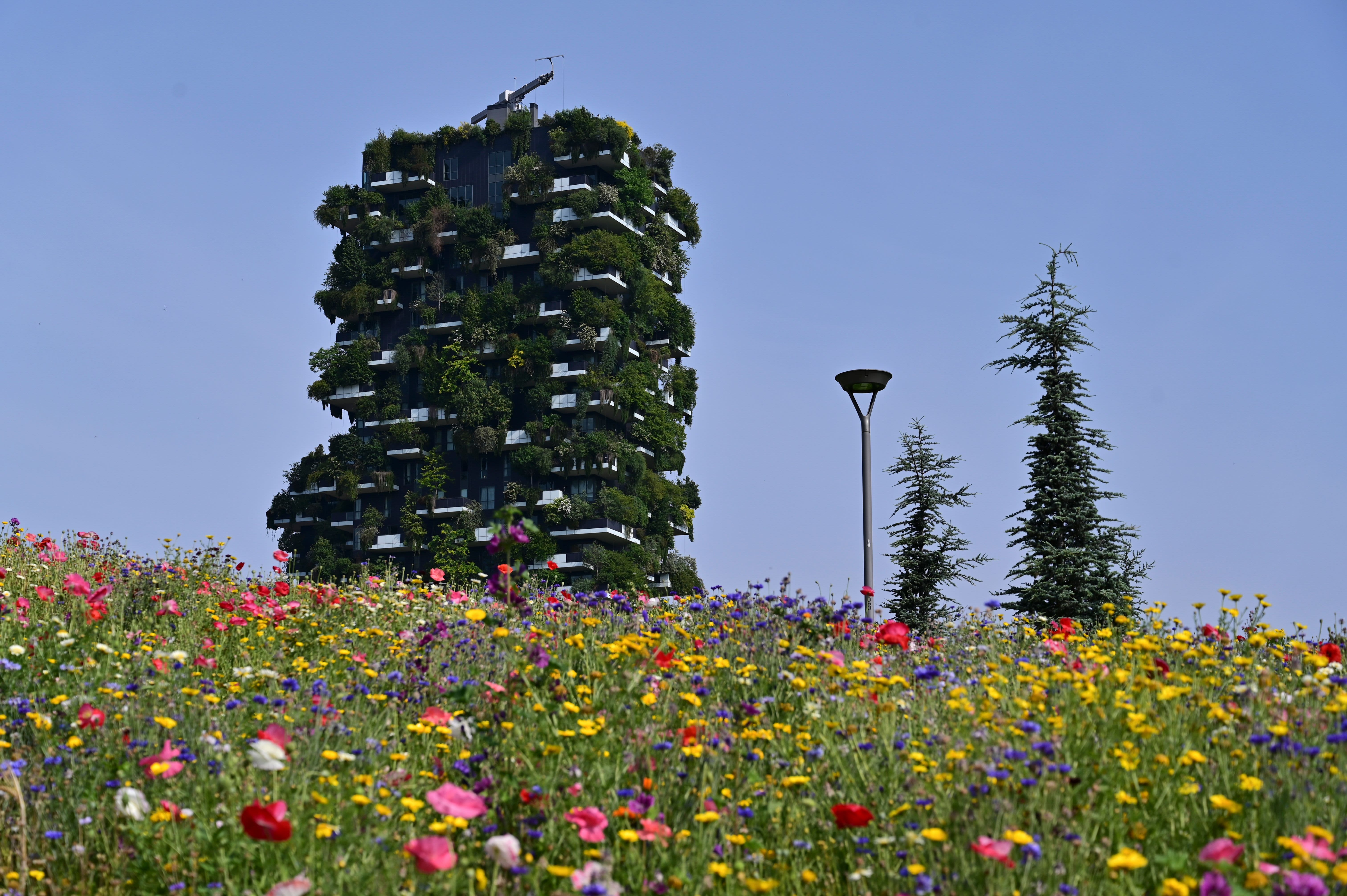From paintings and literature to music and film, the natural world is an inspiration to many.
Its influence on architecture is also apparent, with a number of interesting developments now integrating plants and trees into their design.
One example of this is the Bosco Verticale, or Vertical Forest, an Italian residential development of two visually striking towers that stand 80 and 112 meters high.
Featured in an episode of CNBC’s “Sustainable Energy” earlier this year, the exteriors of the buildings — which are located in the Porta Nuova area of Milan — are covered in plants and trees.
Speaking to CNBC, Stefano Boeri, the architect behind the design, described the Vertical Forest as a “very simple thing: it’s a way to concentrate, in a very small urban surface … thousands of plants.”
The design of this “mutant building,” as Boeri puts it, also provides a number of interesting benefits to its residents.
“I’ve been living at the Bosco Verticale since its opening,” Simona Pizzi said. “It doesn’t feel like we’re living right in the middle of busy Milan, where everything goes quite fast,” she added.
“Having these plants right on the terrace, real trees, has certainly had a positive impact on my life. It brings (the) temperature down in the summer and it feels like these plants have generated a microclimate, it’s very pleasant.”
The design has also had an effect on individual energy use. “In the winter, we use less heating thanks to this greenhouse effect and in the summer, we use less air conditioning because the air is cooler,” Pizzi explained.
The power of timber
Another architect featured in “Sustainable Energy” this year is Vancouver-based Michael Green, of Michael Green Architecture (MGA). The practice has placed great emphasis on integrating timber into its designs.
Take the T3 Minneapolis building in Minnesota. Completed in 2016, this structure uses more than 1,100 panels of nail-laminated timber, or NLT. According to MGA, most of the NLT used in the building is “made of lumber from trees killed by the mountain pine beetle.”
In an interview with CNBC broadcast back in May, MGA’s Green looked to highlight the potential environmental benefits of using timber in the construction process.
“Forestry is a complicated animal and (in) different parts of the world, in some places it’s not sustainable, we’re not replanting at a fast rate,” he said.
“But when we get it right — meaning we’re replanting — we can actually create a harmony where we’re growing more trees, young trees are sequestering carbon faster than old trees, and we can actually create a cycle of planting trees and using wood that actually captures more carbon than if we just left the forest as a native forest.”
A need for balance
Green’s articulation of the need for balance and harmony is an important one echoed by others.
Over in France, for example, Stéphane Hallaire, the president and founder of a social enterprise called Reforest’Action, was asked about the conditions required for wood-based design models to work and be truly sustainable.
“Well, to be truly sustainable they need to use trees produced locally, ideally, and in sustainable, managed forests,” he explained.
“We need to be very cautious of not … destroying forests to build houses or buildings,” he added. “If we build every single house in wood, the forest may not be sufficient to provide the wood.”
